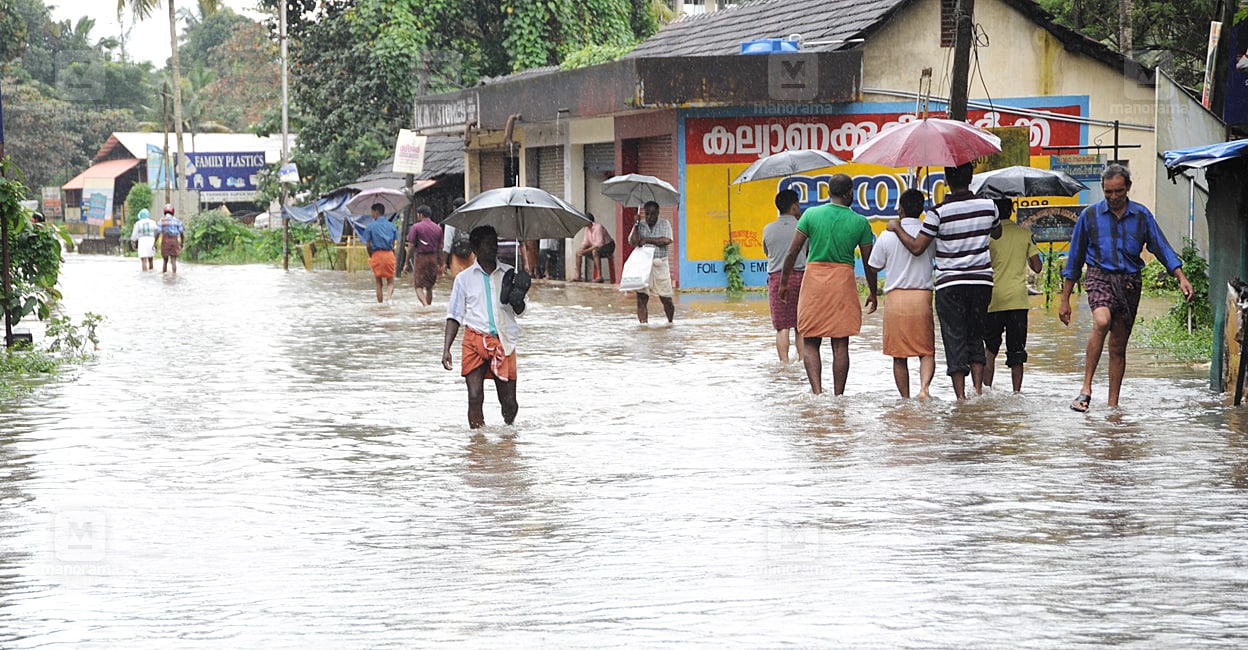Carbon dioxide is a greenhouse gas that plays a major role in global warming. Increasing carbon dioxide in the oceans and atmosphere is causing large-scale climate change. As a result, droughts and heat waves are being experienced all over the world today. It also causes unexpected floods by causing large floods in a short period of time.
When the Kottayam Eirailkadav-Manipuzha Bypass Road got flooded during heavy rains. Image: Abhijit Ravi Manorama
At the same time, a new study shows that carbon dioxide is causing a significant decrease in the amount of rain in the mountainous and mountainous regions that receive the most rain on Earth. This discovery was made in a joint study by the University of Pusan in South Korea and the University of Hong Kong in China. The results of the study say that the rains will decrease in Kerala in the coming days as well.
The unique climate of the mountain region
Mountains have the ability to create their own unique climate. Mountains can block the wind, create cold weather and rain. An example of this is the unique climate in Kerala due to the Western Ghats. However, the study found that the climate in mountain and mountainous regions is also affected to a large extent as the presence of greenhouse gases increases globally and the temperature rises. Carbon dioxide also plays a crucial role in that increase.
This study sheds new light on how this change occurs. Previous studies on this topic have found that global warming will significantly increase rainfall in mountainous regions. Behind this discovery was the conclusion that the amount of moisture in the atmosphere will increase along with the increase in atmospheric temperature, but the new study, which has also observed the amount of rain received in the last few decades in various mountains of the world, proves that this idea is wrong.

Rain view from Kannur (Image: Manorama)
As the temperature increases
A computer-generated three-dimensional model of the Earth is divided into a number of 25-kilometer-long, horizontal grids for climate studies. The Community Earth System Model with around 1500 grids was developed by the Geophysical Fluid Dynamics Laboratory. In a new study, researchers used this model to understand regional climate and rainfall patterns. According to this, if the amount of carbon dioxide in the atmosphere on Earth doubles, the global temperature will increase by about four degrees Celsius. A tripling of carbon dioxide would result in a temperature rise of almost eight degrees Celsius.
In a similar model study by researchers, it was found that there will be a large decrease in rainfall in mountainous regions, especially in lower latitude regions. The study was mainly in New Guinea, the East African highlands, the Himalayas, Central America, and the Andes. The researchers identified that the top three mountain regions and the central Andes region will experience an increase in precipitation as carbon dioxide increases.

The young man dips his head into the water to escape the heat. View from Piazza del Popola in Rome. (Photo by Tiziana FABI / AFP)
But in Central America and the eastern Andes the situation is completely different. Researchers have found that the amount of rainfall is decreasing with the increase in carbon dioxide. These mountain ranges are located at low latitudes. The lower latitude or low latitude regions are the region located up to 30 degrees from the equator to both poles.
Relevance in India
This finding also makes this study relevant to India. In India, the region from Maharashtra to South India belongs to the lower latitude region. Especially the Western Ghats region which receives the best rainfall in India. According to the new study, it is clear from this study that the increase in carbon dioxide in the atmosphere will lead to less rainfall in the coming days in this region which includes Kerala.
2023-11-20 08:44:35
#Increase #Carbon #Dioxide #Precipitation #increase #places #decrease #Kerala..

